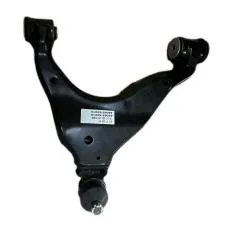
-
 Afrikaans
Afrikaans -
 Albanian
Albanian -
 Amharic
Amharic -
 Arabic
Arabic -
 Armenian
Armenian -
 Azerbaijani
Azerbaijani -
 Basque
Basque -
 Belarusian
Belarusian -
 Bengali
Bengali -
 Bosnian
Bosnian -
 Bulgarian
Bulgarian -
 Catalan
Catalan -
 Cebuano
Cebuano -
 Corsican
Corsican -
 Croatian
Croatian -
 Czech
Czech -
 Danish
Danish -
 Dutch
Dutch -
 English
English -
 Esperanto
Esperanto -
 Estonian
Estonian -
 Finnish
Finnish -
 French
French -
 Frisian
Frisian -
 Galician
Galician -
 Georgian
Georgian -
 German
German -
 Greek
Greek -
 Gujarati
Gujarati -
 Haitian Creole
Haitian Creole -
 hausa
hausa -
 hawaiian
hawaiian -
 Hebrew
Hebrew -
 Hindi
Hindi -
 Miao
Miao -
 Hungarian
Hungarian -
 Icelandic
Icelandic -
 igbo
igbo -
 Indonesian
Indonesian -
 irish
irish -
 Italian
Italian -
 Japanese
Japanese -
 Javanese
Javanese -
 Kannada
Kannada -
 kazakh
kazakh -
 Khmer
Khmer -
 Rwandese
Rwandese -
 Korean
Korean -
 Kurdish
Kurdish -
 Kyrgyz
Kyrgyz -
 Lao
Lao -
 Latin
Latin -
 Latvian
Latvian -
 Lithuanian
Lithuanian -
 Luxembourgish
Luxembourgish -
 Macedonian
Macedonian -
 Malgashi
Malgashi -
 Malay
Malay -
 Malayalam
Malayalam -
 Maltese
Maltese -
 Maori
Maori -
 Marathi
Marathi -
 Mongolian
Mongolian -
 Myanmar
Myanmar -
 Nepali
Nepali -
 Norwegian
Norwegian -
 Norwegian
Norwegian -
 Occitan
Occitan -
 Pashto
Pashto -
 Persian
Persian -
 Polish
Polish -
 Portuguese
Portuguese -
 Punjabi
Punjabi -
 Romanian
Romanian -
 Russian
Russian -
 Samoan
Samoan -
 Scottish Gaelic
Scottish Gaelic -
 Serbian
Serbian -
 Sesotho
Sesotho -
 Shona
Shona -
 Sindhi
Sindhi -
 Sinhala
Sinhala -
 Slovak
Slovak -
 Slovenian
Slovenian -
 Somali
Somali -
 Spanish
Spanish -
 Sundanese
Sundanese -
 Swahili
Swahili -
 Swedish
Swedish -
 Tagalog
Tagalog -
 Tajik
Tajik -
 Tamil
Tamil -
 Tatar
Tatar -
 Telugu
Telugu -
 Thai
Thai -
 Turkish
Turkish -
 Turkmen
Turkmen -
 Ukrainian
Ukrainian -
 Urdu
Urdu -
 Uighur
Uighur -
 Uzbek
Uzbek -
 Vietnamese
Vietnamese -
 Welsh
Welsh -
 Bantu
Bantu -
 Yiddish
Yiddish -
 Yoruba
Yoruba -
 Zulu
Zulu
High-Performance Rear Control Arms | Enhance Your Vehicle's Suspension
The rear control arm is a crucial component of a vehicle's suspension system, playing a vital role in maintaining stability and handling. Designed to connect the rear axle to the chassis, this component allows for controlled movement of the wheel. By managing the position of the wheel during various driving conditions, the rear control arm aids in ensuring optimal tire contact with the road surface, which enhances traction and control.
Manufactured from robust materials such as steel or aluminum, the design of the rear control arm is pivotal for enduring the stresses of driving. Given the dynamic forces encountered while taking corners, hitting bumps, or during braking, these arms must be both strong and lightweight. High-quality rear control arms also include bushings, which help reduce friction and allow for smoother movement. These bushings provide crucial dampening properties that further enhance the ride quality while combating noise and vibration.
Regular inspection and maintenance of the rear control arm are essential for vehicle safety and performance. Over time, wear and tear can lead to degradation, resulting in symptoms such as uneven tire wear, poor alignment, or a noticeable decrease in handling. If drivers experience excessive noise from the rear of the car or a noticeable looseness in the rear suspension, it is advisable to have the rear control arms inspected. Ignoring these signs can lead to more severe issues, including compromised wheel alignment or suspension failure.
rear control arm

Upgrading or replacing rear control arms is common among automotive enthusiasts seeking enhanced performance. Many aftermarket options are available, allowing users to optimize their vehicle's handling characteristics. Performance-oriented control arms may offer improved geometry, enhanced strength, and better adjustability, which can significantly boost cornering capabilities and overall driving dynamics.
In conclusion, the rear control arm is a foundational element of a vehicle's suspension system, impacting safety, performance, and ride comfort. Understanding its importance can encourage vehicle owners to prioritize maintenance and consider upgrades when necessary. By ensuring that this component is in good condition, drivers can enjoy a smoother, safer, and more responsive driving experience. Regular checks and timely replacements will not only benefit the vehicle’s handling but also extend its lifespan, enhancing overall driving enjoyment.







